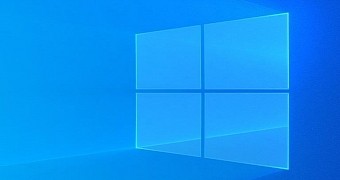Microsoft has just declared Windows 10 version 1809, also known as the October 2018 Update, ready for broad deployment within organizations, as the company completes another key step in the rollout of this OS feature update.
And while this milestone has been reached later than originally anticipated, all eyes are actually on the next Windows 10 update that is projected to launch as soon as the next month.
And what’s more, Windows 10 version 1903, codenamed 19H1 and likely to land as April 2019 Update, is projected to be finalized in March, which means that the RTM build should be signed off today at the latest.
In other words, the RTM build of Windows 10 version 1903 should already be complete, assuming that the development process advanced as planned and everything worked smoothly.
But did it?
Microsoft doesn’t typically announce the moment when a new Windows 10 feature update reaches RTM, but given that Windows 10 19H1 is projected to launch as version 1903, this is the last day when the development process could be completed.
The version of each feature update is an indication of the RTM signoff date, with the first two digits representing the year and the other two the month when the development is finalized. In this case, version 1903 means the update was completed in March 2019.
While the existing Windows 10 19H1 preview builds run pretty smoothly, more worrying is that Microsoft has recently discovered an issue that forced the company to pull what was believed to be an RTM candidate.
Windows 10 build 18362, which was shipped to the Fast ring and later to users in the Slow ring, was retired after Microsoft discovered an issue causing an update block. In other words, some Slow ring insiders were unable to install this update on their devices.
Needless to say, this causes concerns that Windows 10 version 1903 could be a buggy release, just like its predecessor.
Back in October, Microsoft skipped the Release Preview ring, which helps iron out more bugs, to begin shipping the October 2018 Update (version 1809) to users. A few days later the company decided to pull it completely after discovering that the update came with a critical bug that caused the removal of user files stored in libraries.
It was later found that the bug was first reported by insiders earlier the same year, so Microsoft somehow missed it and actually launched the update with an issue that eventually proved to be more widespread than initially believed.
Obviously, the company doesn’t afford to make the same mistake twice, and given it recently pulled the Slow ring build, many wonder if, after all, two updates every year aren’t maybe too much.
According to Microsoft’s release schedule, Windows 10 receives two feature updates every year, one finalized in March and the other one ready in September. The release of both of them starts one month after the RTM build is signed off.
The recent blunders, including the October update fiasco, are signs that Microsoft might actually need more time for thorough testing, and while the company itself decided to go for this super-fast update pace, sticking with a single update per year may be a better choice for everyone.
The October update, for instance, is running on some 25 percent of the Windows 10 devices out there, only a few weeks before Microsoft is projected to give the go-ahead to another feature update. This means there’s a good chance many users could skip it altogether and go directly to the April update that goes live next month.
For now, very little is known about the current state of Windows 10 version 1903, but I guess we’ll hear more about it as we advance towards the unknown release date.
And yes, this is another major issue that Microsoft promised to resolve: the company still provides users with limited info on the development and availability of OS updates, so here we are on March 29 without even knowing if Windows 10 version 1903 is ready.

 14 DAY TRIAL //
14 DAY TRIAL //